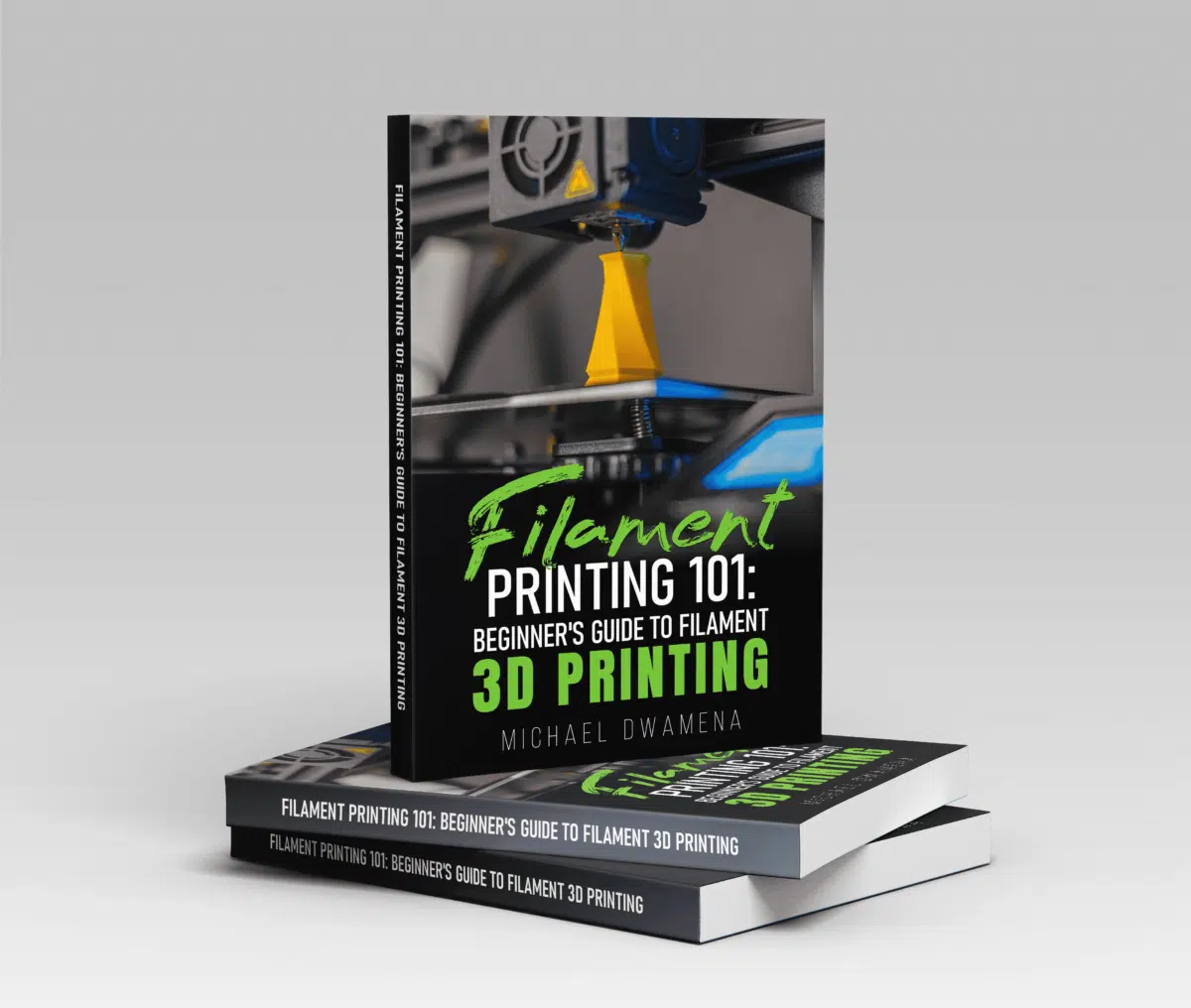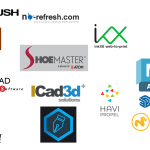First-layer calibration is the first and one of the most important steps of setting up your 3D printer. If you do it properly, you’ll have a high quality, stable model. If not, your model will likely have issues ranging from peeling to warping or even sliding off the base. Unfortunately, it is somewhat technical to get started with 3D printer adjustments. However, once you get started, Prusa i2 Mk3 first layer calibration is relatively simple and mostly an automated process.
If you’re just getting started with 3D printing, learning how to manage first layer calibration is one of the most important things you can learn. Basic calibration means setting the XYZ calibration to ensure the printer was assembled properly, completing the self test, and setting Z calibration and S offset to get a good print.
Calibrating the First Layer of Your Prusa i3 MK3
First-layer calibration is the process of calibrating the distance between the nozzle tip and the print surface. You can use the automatic calibration in the Wizard, which is the last step of the XYZ calibration. You can also choose to recalibrate from the menu under “calibration” –> “first layer calibration”. The 3D printer will let you know when to calibrate and adjust the nozzle height as you go.
In most cases, you’ll be asked to use either the metal plate that shipped with your Prusa MK3 or a piece of paper during calibration. Here, you’ll want to adjust the knob so that the nozzle height is exactly enough to slide the paper underneath with resistance. This ensures the nozzle height is not too high or too low. However, in some cases, you may want to complete bed level correction first – which requires a full XYZ calibration.
Nozzle Too Low
If your nozzle is too low, it can cause numerous problems with your print. These start out with damage to the printer, where the Z-level print can scratch the print bed. If the nozzle is too low, it can also affect your print. For example, by resulting in layers that are too thin. The nozzle might also scratch or damage the printed surface if it’s lower than the calibration thinks it is. That will, eventually, result in a lower quality or a failed print.
If you can’t slide a piece of paper under the nozzle, you probably want to make adjustments. During the calibration, place a piece of paper on the printer. If the nozzle catches the edge of the paper, hit “reset”. Lower the P.I.N.D.A/SuperPINDA sensor by 2-3 threads and then run the calibration again.
However, if your print head only catches on some parts of the bed, you’ll want to perform an XYZ calibration. The MK3 offers automated, 9-point mesh bed leveling – but you’ll have to run the full calibration cycle.
Nozzle Too High
You might also have the opposite problem. If your nozzle is too high, you’ll have issues with the layers sticking to the print deck or to each other. That’s because the filament has too much time to cool between when it leaves the nozzle and touches the print bed. In most cases, you can make this adjustment very easily. Here, the idea is that you run the “first layer calibration” and ensure that you can just slide a piece of paper under the nozzle at any given point. If the bed is too high, you’ll want to slightly raise the bed using the knob.
Perfect First Layer
A perfect first layer calibration results in smooth filament or evenly textured filament. After printing the first layer using the First Layer Calibration, you should get an even row of zig-zag lines. When you rag your finger over that first layer, it should be firmly planted to the bed. If it moves or is loose or peeled up at any point, it’s likely that the nozzle is too high.
Live Z Adjustment for Prusa
Prusa offers a built-in “Live Z Adjustment” feature for its MK3 line. This feature is different than the “First Layer Calibration” feature because it makes micro adjustments to the Z-layer, which can speed up the process. Therefore, it’s a good fit if you only want to make slight adjustments to the Z layer. This makes it easy to quickly adjust your Z-level to correct small errors, such as the print surface being slightly too close to the nozzle, etc. If you haven’t completed a full first layer calibration, your nozzle is scraping, etc., you should go back to the first layer calibration. That’s also true if you’ve replaced the sensor, disassembled the print head, or otherwise.
- Our new Filament Printing 101 Course is just for you! Lean how to create perfect professional prints without all the hassle.
- Don't let common mistakes hold you back, click the link to learn more and get ahead now!
When you enter the “live Adjust Z” it will show the Z-level previously set during the First Layer calibration. You can access this from the LCD Menu –> Settings –> Live Adjust Z.
Important Notes
Z-level starts at zero (0.000). During Z-level calibration, you can turn the knob counter-clockwise to increase the positive value and to reduce the distance between the print surface and the nozzle. You can also turn the knob clockwise to increase the negative value and to increase the distance between the print surface and the nozzle.
Live Adjust Z supports –1.500 to –0.200. If you have to increase values above zero, you either have a problem with your sensor alignment or should recalibrate the first layer. Here, it’s important to ensure that the P.I.N.D.A./SuperPINDA sensor is about 1mm above the nozzle head. If not, it’s been improperly installed.
In addition, you should always be sure to make micro adjustments to the nozzle during Live Z Adjustment. That means turning the knob one screw at a time. This will prevent or reduce chances of over adjustment.
How to Adjust
Adjusting the Z-layer on your 3D printer is relatively easy. In most cases, you need a piece of paper and a few minutes of time. Here, you should check that you can just fit the paper, with some resistance, under the nozzle at each corner and the center of the bed. If you can’t, it’s important to adjust the nozzle up or down or to re-level the bed.
- Turn on Live Z Adjustment.
- Place your paper on the bed between the nozzle and the bed.
- If the nozzle lifts or bites into the paper, it’s too high. If it goes over the paper without touching it, it’s too low.
Everyone Will Have Different Adjustments
The perfect Z level adjustment depends on numerous factors like installation, bed height, calibration, and exact sensor height. That means it’s impossible to share specific goal values. That’s especially true if you’ve purchased a kit MK3 rather than a model that’s been pre-assembled. For example, your Z-height is based on where the sensor is installed. So, if you’ve installed your sensor even a fraction of a millimeter higher than recommended, you’ll get a different Z-layer ideal. In some cases, appropriate Z-level also depends on factors like which material you’re using, which nozzle size you’re using, and how flat you want the lines between layers. This means there’s quite a lot of personalization and room for customization – so your best option is to calibrate to where you’re happy with it. Once you get general calibration issues fixed, you can always slightly tweak the Z-layer calibration until it’s perfect for your needs.
Related Questions
If you still have questions about calibrating your MK3, these related questions should help.
Why is my first layer so rough?
In most cases, if your first layer is very rough, it means the nozzle is too far away from the print bed. Open Live Z Adjustment or recalibrate your first layer to fix the issue. Here, you should always remember to make micro adjustments to avoid bringing the nozzle too close to the bed.
How close to the bed should a nozzle be?
In most cases, the nozzle should be just close enough to the bed that you can slide a piece of paper under with slight resistance. However, as paper is sold in different thicknesses, some printers like to go by eye, based on the print. Here, a single layer print should be semi-flat with some distinction between lines, but not squashed, scraped, or very rough.
This almost always works out to 0.2-0.3mm for a 0.4mm nozzle, or 25-75% of the nozzle diameter.
What is a good layer height for PLA?
If you’re using a standard 0.4mm nozzle, your layer height should normally be 0.2-0.3mm. However, if you have a 0.8mm nozzle, you can double that. As a rule of thumb, your layer height should be 25-75% of nozzle diameter.
Bottom Line
3D printing helps you to bring your own creations and ideas to life. At the same time, it is often quite technical. Getting technical adjustments like Z-layer correct can make or break your print. However, models like the MK3 make it extremely easy to automatically calibrate your first layer. That means you can easily adjust to get a perfect layer height with very little technical experience.
Hopefully, this guide helped you to calibrate the first layer on your Prusa i3 MK3 printer. If you need further help, check out our other guides to troubleshoot your 3D printer.



